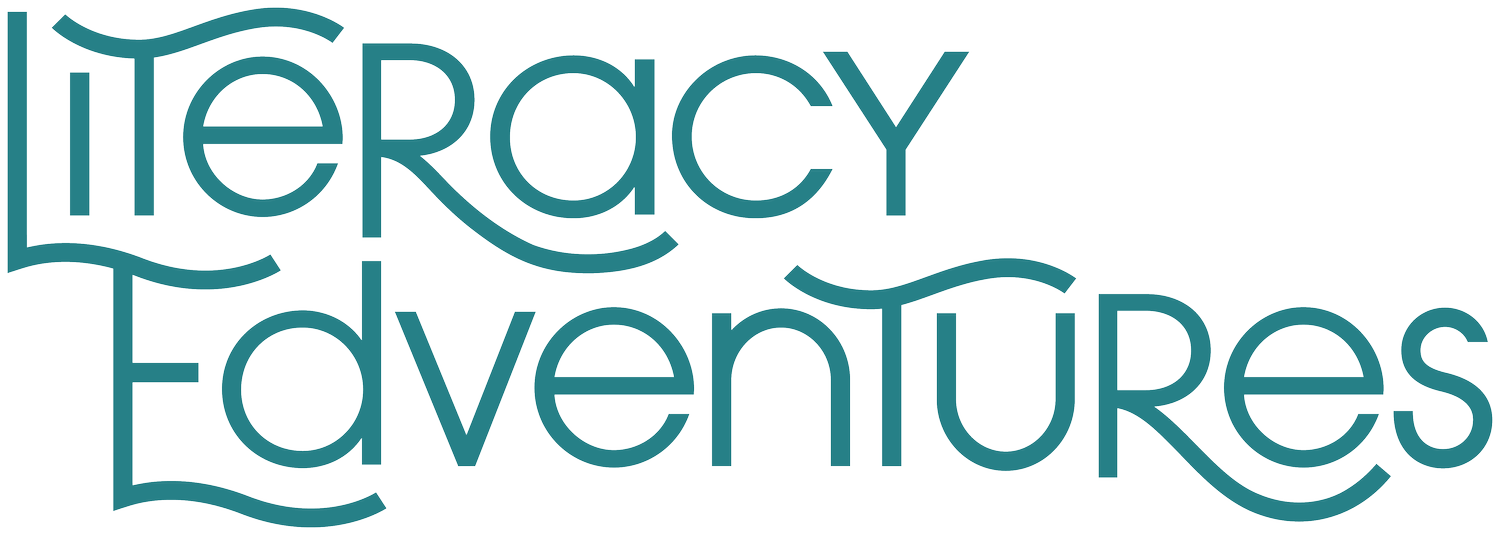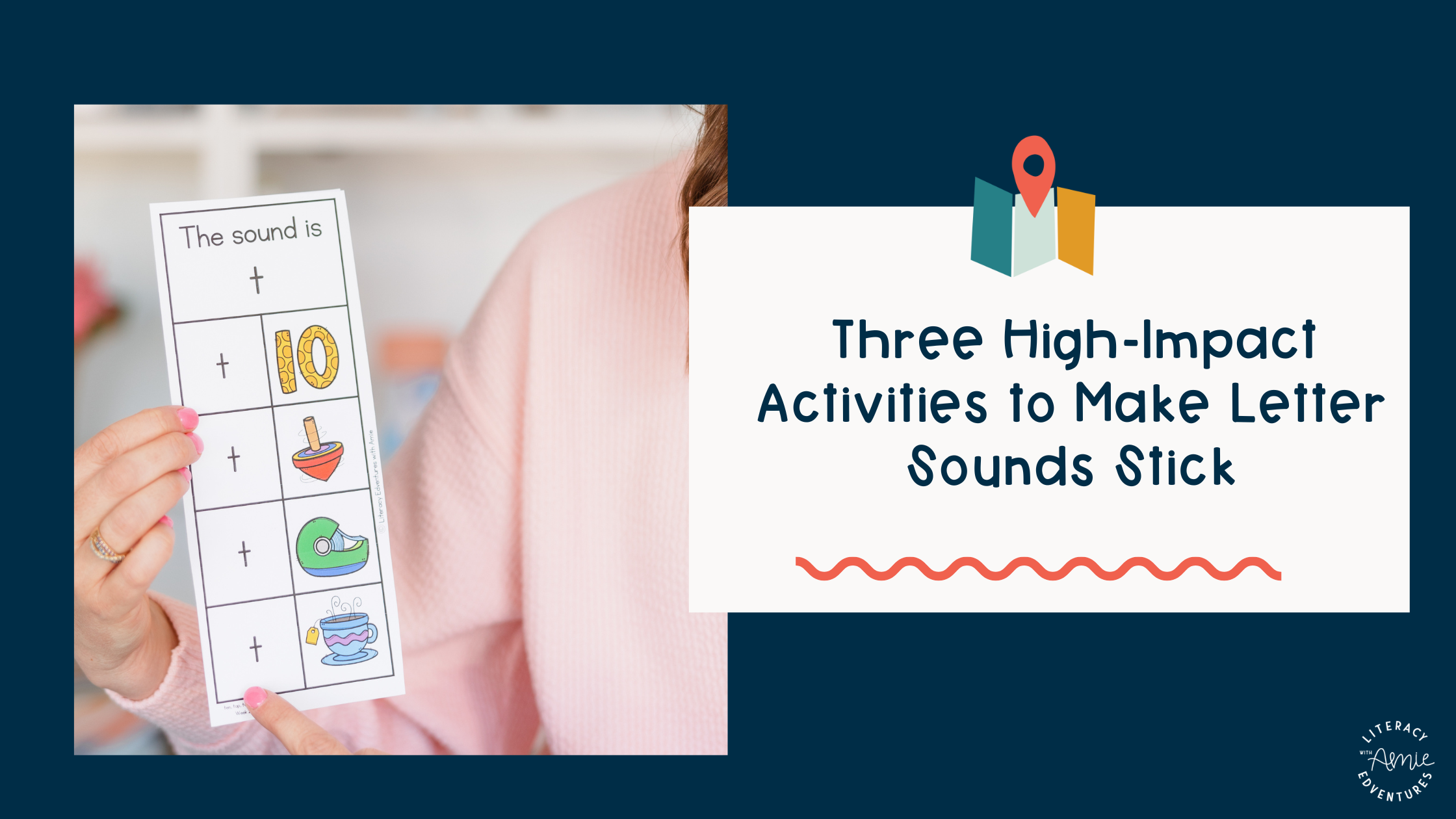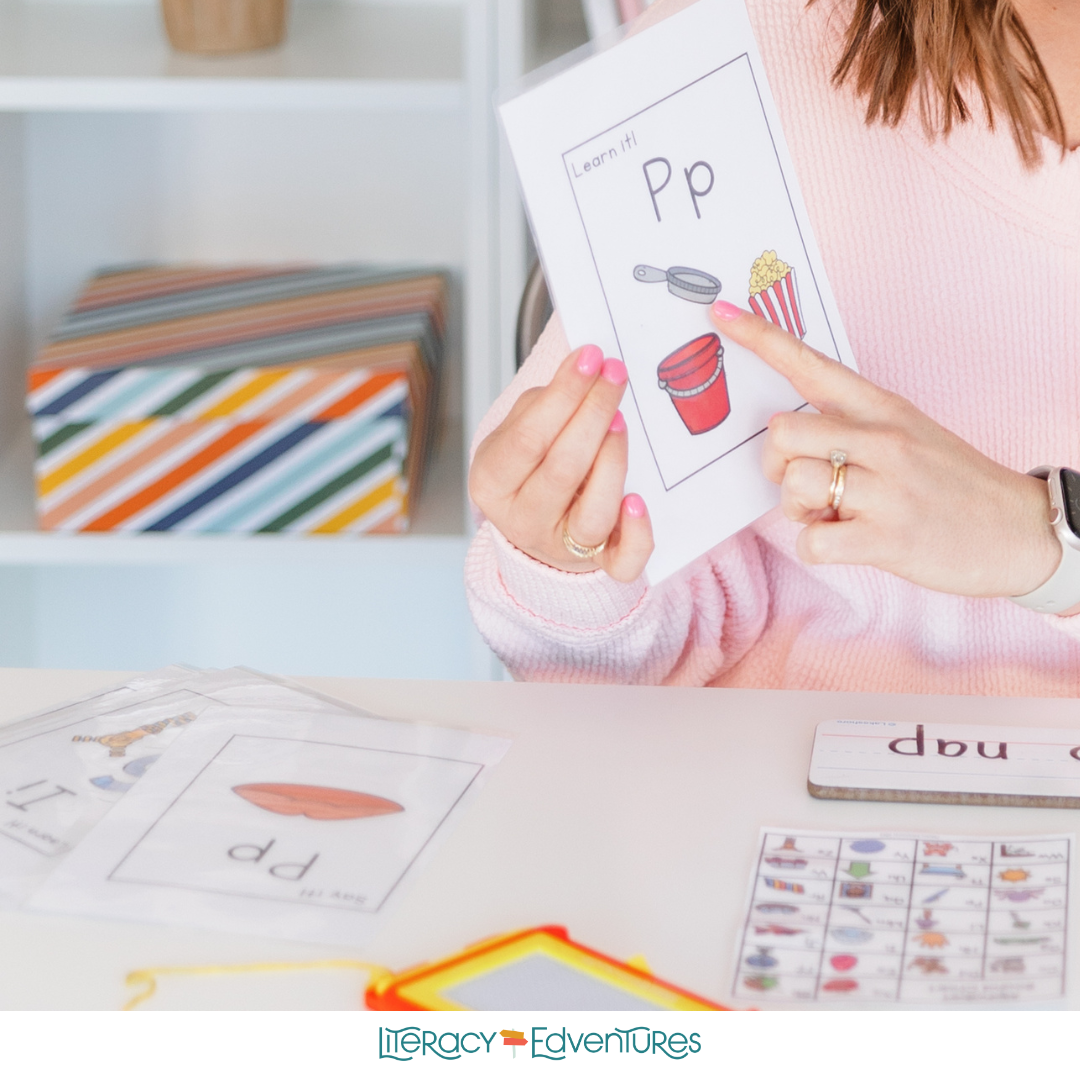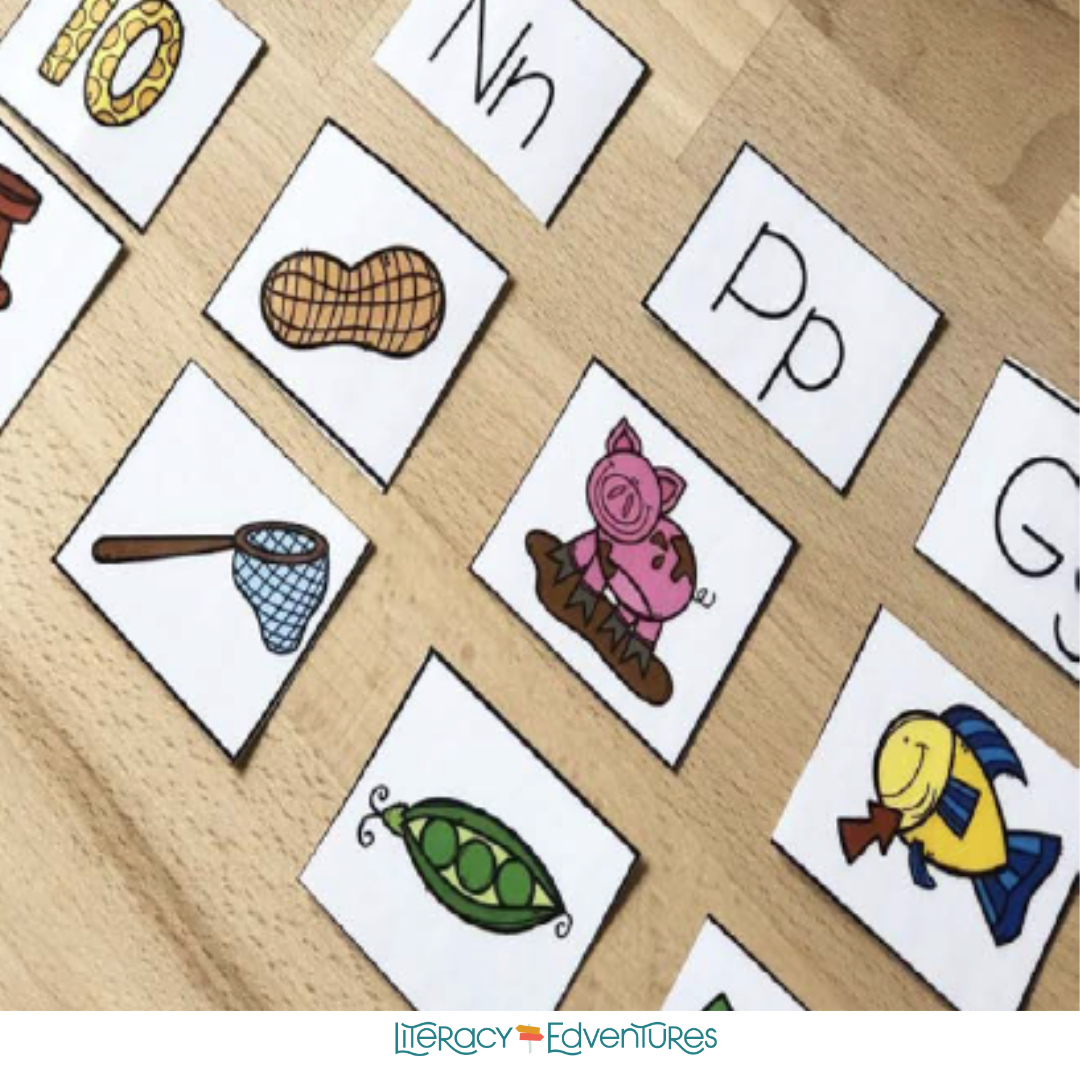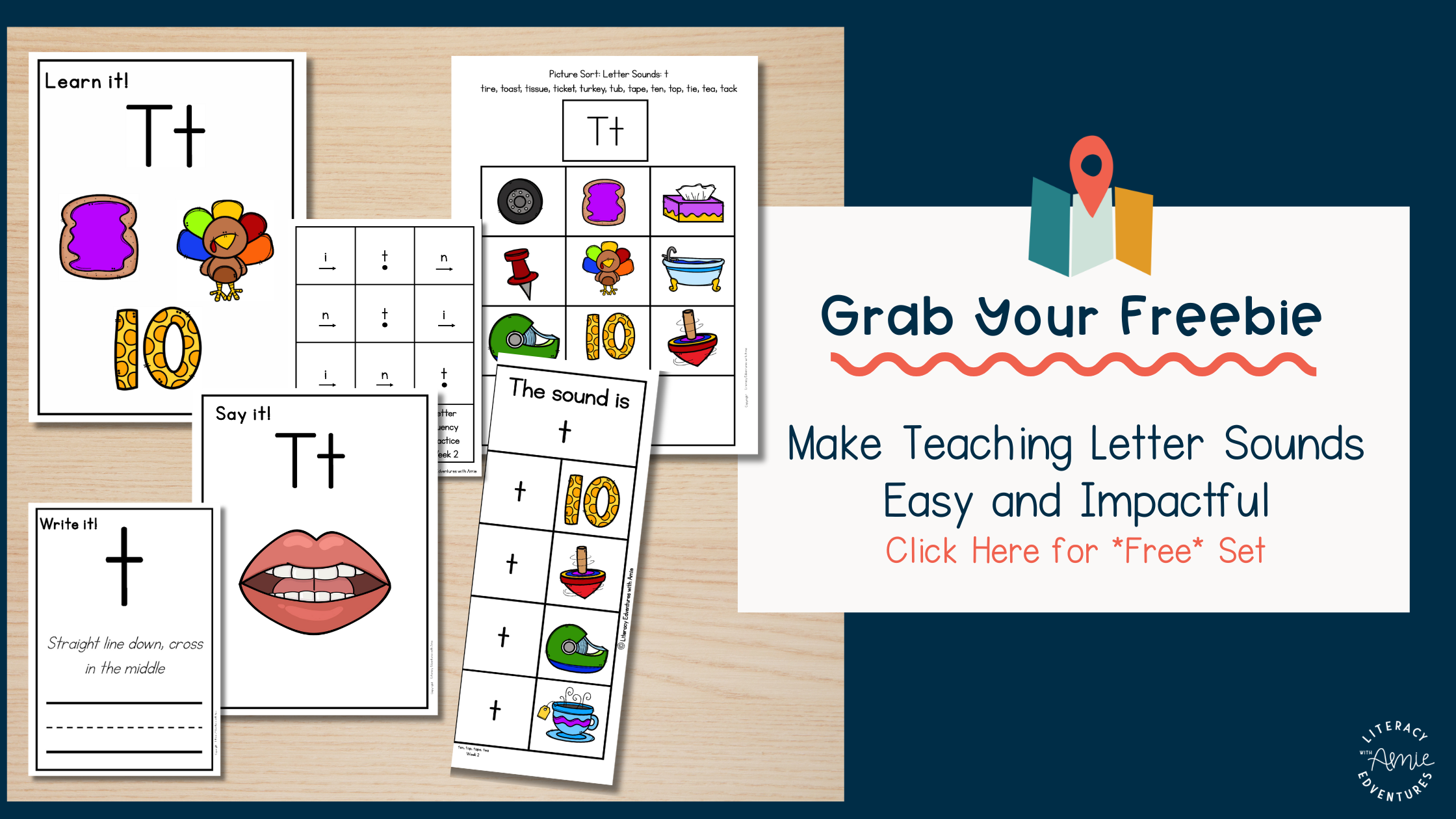Three High-Impact Activities to Make Letter Sounds Stick
Teach the Letter Name, Sound, Articulation, and Formation—Together
One of the most effective ways to help students truly internalize letter sounds is to teach more than just the sound. What students really need is a consistent, research-aligned routine that incorporates all four key components:
✔️ The letter name
✔️ The sound it makes
✔️ How to articulate the sound correctly
✔️ And how to form the letter
This comprehensive approach is at the heart of my Letter Sound Intervention & Articulation Toolkit—because when we combine these elements in a clear, repetitive routine, we activate multiple pathways in the brain that support long-term learning.
Why does this routine work?
Because it’s multisensory—but not overwhelming. It gives students multiple entry points to understanding and remembering each letter. They hear it, see it, say it, feel it, and apply it. The routine stays the same while the letter changes, which builds consistency, confidence, and eventually—automaticity.
And here’s the best part: it’s simple to repeat, easy to scaffold, and incredibly effective in both whole-group and small-group instruction. Whether you’re introducing a new letter or reteaching in intervention, this structure ensures every student has what they need to build strong, lasting letter-sound connections.
Let’s walk through an example using the letter P.
Teacher Script:
“Today we’re learning the letter P. Everyone say the name: P.
Now listen—P says /p/. It’s a quiet sound. You press your lips together and give a tiny puff of air—like you’re popping a bubble. Watch my mouth: /p/, /p/, /p/.”
Next, guide students to practice the articulation:
🪞“Let’s grab our mirrors so we can check how our mouth is moving.
Say /p/ three times as you look at your lips. Do they pop open with a puff of air? Try it again.”
Then invite a moment of peer modeling:
“Turn to a friend and show them what your mouth looks like when you say /p/. Watch theirs too!”
Finally, transition to letter formation:
✍️“Now let’s write the letter P.
Start at the top—big line down, then back to the top for a little curve around.
Each time we write it, we’ll say the sound: /p/, /p/, /p/.”
💡If your students are struggling to retain letter sounds—or if you want to streamline how you teach them—this routine is your best first step.
Use Sound Sorts to Build Flexible Sound Knowledge
Once students begin learning letter sounds, we want to move beyond simple identification and into sound discrimination—the ability to hear, isolate, and categorize sounds. One of the most powerful ways to do this? Sound sorts.
Sound sorts are hands-on, engaging, and perfect for small groups, centers, or even whole group instruction. They require students to listen carefully to the initial sound in a word, say it aloud, and decide where it belongs.
Here’s why they work:
Sorting forces students to analyze and compare. It’s not about memorizing a picture card—it’s about listening to the first sound, connecting it to what they already know, and making a decision. That kind of active engagement strengthens phonemic awareness and builds flexibility with letter-sound knowledge.
Teacher Script (Beginning Sort):
“We’re going to play a sound sorting game. Look at these two letters: M and S.
M says /m/, and S says /s/. Let’s say both sounds together: /m/… /s/.”
Hold up a picture of a mitten.
🗣“What’s this? A mitten. What’s the first sound? /m/. Does that sound like M or S?”
Student: “M!”
“Exactly! Mitten starts with /m/, so we’ll put it under M.”
Continue sorting other pictures: sun, sock, mouse, sandwich.
As students grow in confidence, add more sounds, trickier contrasts (like /b/ and /v/), or even ask students to lead the sort themselves.
To make sound sorts even more meaningful:
Use real objects for a tactile option
Let students cut and paste pictures into notebooks
Encourage them to talk through their thinking: “I put this under S because sun starts with /s/.”
💡When students can explain why something starts with a certain sound, they’re not just repeating—they’re understanding. And that’s the kind of deep processing that leads to long-term retention.
Sound sorts can be repeated across the week and scaled up to include ending sounds, vowel sounds, or even blends. But at the foundation? They’re a powerful tool for locking in letter-sound knowledge with purpose and play.
Use Sound Mats for Daily Review and Lasting Mastery
After a letter and its sound are introduced, our job isn’t done. Students need consistent, repeated practice to move that new learning from short-term memory to long-term mastery—and that’s where sound mats come in.
Sound mats are a simple, structured tool that allow students to review letter names, sounds, articulation, and formation all in one place. They support automaticity, the ability to recall sounds quickly and accurately, which is essential for fluent reading and spelling.
Even better? Sound mats are incredibly flexible. You can use them:
✅ At your small group table as a warm-up or review
✅ In a literacy station for independent or partner work
✅ During intervention to reinforce letters students haven’t mastered yet
Teacher Routine (using the letter T):
“Let’s look at the letter T on our sound mat.
Say the name with me: T.
What sound does T make? /t/ — it’s a quick, quiet sound made by placing your tongue behind your top teeth.
Let’s say it three times: /t/, /t/, /t/.
Now trace the letter with your finger—start at the top, big line down, then little line across the top. Say the sound as you trace: /t/, /t/, /t/.”
Then move to the next letter.
This short, focused review helps students strengthen:
Visual recognition (name the letter)
Phonemic recall (say the sound)
Articulatory awareness (check the mouth shape)
Motor memory (trace and form the letter)
It’s not about doing something new every day—it’s about doing something effective every day.
In literacy stations, sound mats offer structure and predictability:
Students can work alone or with a partner to practice known letters
You can add dry-erase markers, letter tiles, or picture cards for matching activities
They’re easy to differentiate—just highlight or star the target letters for each student
💡Sound mats build confidence through repetition. And because students know the routine, they can focus on fluency and accuracy—not on figuring out what to do.
Over time, this simple tool helps students turn scattered knowledge into strong, automatic letter-sound associations that they can rely on as they begin blending, decoding, and writing with success.
Final Thoughts: Keep It Consistent, Purposeful, and Predictable
When it comes to helping students master letter sounds, the secret isn’t in doing more—it’s in doing the right things consistently.
The three routines we’ve talked about—
✔️ Teaching name, sound, articulation, and formation together
✔️ Using sound sorts to strengthen sound discrimination
✔️ Building in daily review with structured tools like sound mats
—aren’t flashy. But they’re high-impact, brain-aligned, and incredibly effective when used with intention.
You don’t need to reinvent your phonics block. You just need systems that give students repeated, meaningful practice in ways that stick.
Letter-sound knowledge is foundational—and when we teach it clearly, reinforce it consistently, and create space for students to own it, we’re giving them the tools to unlock everything else reading requires.
So whether you're working with a whole class, a small group, or one student at a time, remember:
Simple. Consistent. Intentional. That’s what makes it stick.
You’ve got this—and your students are lucky to have you.

